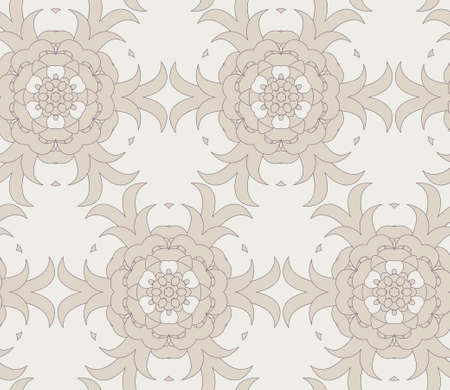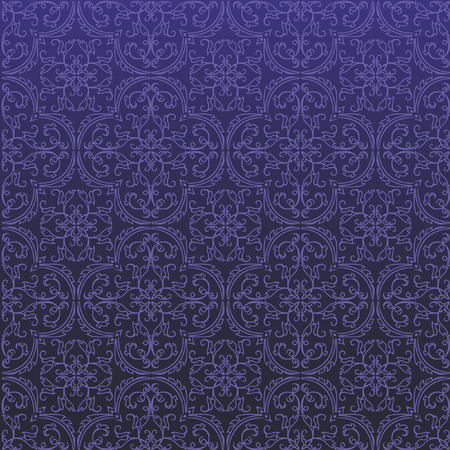Historical Roots of Wallpaper in American Homes
The Early Days: Colonial Beginnings
Wallpaper first made its way to America during the colonial era. Settlers brought their tastes and traditions from Europe, especially from England and France, where wallpaper was already a sign of style and status. In those days, wallpaper was a luxury item, imported at great cost. Early American homes used wallpaper to add color and pattern to otherwise plain walls, making rooms feel more inviting.
Wallpaper Patterns Through the Ages
As time went on, the types of patterns and materials changed. In the 18th century, floral prints and pastoral scenes were popular. By the 19th century, new printing techniques allowed for more detailed patterns like damasks, stripes, and geometric shapes. These designs helped define different interior styles and reflected the changing tastes of American families.
| Time Period | Popular Wallpaper Patterns | Common Materials |
|---|---|---|
| Colonial Era (1600s-1700s) | Floral motifs, chinoiserie, simple stripes | Hand-painted or block-printed paper |
| Victorian Era (1800s) | Damask, gothic patterns, nature themes | Machine-printed paper, flocked textures |
| Early 20th Century | Art Nouveau curves, Art Deco geometrics | Mass-produced paper with brighter colors |
Wallpaper’s Role in Traditional American Interiors
In traditional American interiors, wallpaper served as more than just decoration. It expressed personal taste, indicated social status, and often set the mood for each room. For example, parlors might feature elegant damasks or scenic murals, while bedrooms could have soft florals or calming stripes. The choice of wallpaper became an important part of home design that reflected both tradition and innovation.
2. Popular Patterns and Motifs
Classic American Wallpaper Designs
Traditional American interior design often features wallpaper with time-honored patterns and motifs that carry both style and cultural meaning. Some of the most popular designs include damask, toile, florals, and stripes. Each pattern brings its own unique charm and history to a space, reflecting regional tastes and influences across the United States.
Damask
Damask is known for its intricate, repeating patterns that usually feature flowers, foliage, or fruit. This style originated in Europe but became especially popular in early American homes looking to convey elegance and luxury. You’ll often see damask wallpaper in formal dining rooms or historic homes throughout the Northeast.
Toile
Toile de Jouy, often shortened to “toile,” showcases detailed scenes—sometimes pastoral landscapes or historical events—printed in a single color on a light background. Toile gained popularity in Colonial America, especially in New England, where it was used to tell stories or celebrate rural life. Today, toile remains a favorite for bedrooms and powder rooms seeking a classic country vibe.
Florals
Floral patterns are a staple in traditional American interiors. From delicate roses to bold peonies, floral wallpapers evoke a sense of comfort and nostalgia. The South is particularly fond of large-scale floral prints that bring warmth and charm to living spaces.
Stripes
Stripes are versatile and timeless. They can make a room appear taller or more spacious depending on how they’re used. In the Midwest and coastal regions, striped wallpapers are common in hallways and living rooms, offering a clean yet lively look that fits both casual and formal settings.
Regional Preferences for Patterns
| Pattern | Cultural Significance | Popular Regions |
|---|---|---|
| Damask | Symbolizes sophistication and old-world elegance | Northeast, Historic Homes |
| Toile | Tells stories; reflects colonial heritage | New England, Countryside Estates |
| Florals | Evoke nature, comfort, and tradition | The South, Cottage-Style Homes |
| Stripes | Add visual interest; create spaciousness | Midwest, Coastal Areas |
Selecting the right wallpaper pattern is about more than just aesthetics—it’s also about honoring the culture and history of your home’s region. These classic American motifs continue to be beloved choices for anyone aiming to achieve an authentic traditional look.

3. Color Palettes and Material Choices
Classic American Color Schemes for Wallpaper
In traditional interior design, color palettes play a big role in setting the mood of a room. American homes have often favored timeless and comfortable color schemes that bring warmth and elegance. Popular choices include soft creams, dusty blues, sage greens, and warm golds. Rich burgundy and deep forest green are also common in historic homes, especially in formal spaces like dining rooms or parlors.
Common Traditional Wallpaper Color Palettes
| Color Palette Name | Main Colors | Typical Room Usage |
|---|---|---|
| Colonial Neutrals | Cream, taupe, muted gray | Living rooms, bedrooms |
| Early American Blues & Greens | Dusty blue, sage green, ivory | Kitchens, entryways |
| Victorian Rich Tones | Burgundy, gold, dark green | Dining rooms, studies |
| Country Warmth | Soft yellow, terracotta, faded red | Kitchens, family rooms |
Materials Used for Traditional Wallpaper
The materials chosen for wallpaper have evolved over time but traditional American interiors often feature wallpapers made from high-quality paper. Early wallpapers were handcrafted with natural fibers and sometimes linen backings for extra strength. Today, you can still find wallpapers inspired by these classic materials.
Natural Dyes and Their Influence
Before synthetic dyes became popular in the late 19th century, most wallpapers were colored using natural dyes. These included plant-based dyes such as indigo for blue tones, walnut shells for browns, and saffron or turmeric for yellows. The result was a softer, more organic look that felt inviting and authentic.
| Dye Source | Color Produced | Wallpaper Style Examples |
|---|---|---|
| Indigo Plant | Blue shades | Floral patterns, stripes |
| Walnut Shells | Brown tones | Paisleys, damasks |
| Saffron/Turmeric | Yellow/gold hues | Borders, medallions |
| Madder Root | Reds and pinks | Chintz prints, toile designs |
| Nettle or Oak Bark | Greens/earth tones | Naturistic scenes, leaf motifs |
Papers and Finishes in Traditional Design
The type of paper used can also influence the final look of wallpaper. Traditional options include plain paper (for hand-printing), coated paper (for durability), and fabric-backed paper (for added texture). Many classic designs use matte finishes to create a subtle elegance rather than shine. These choices help wallpapers blend beautifully with wood trims and antique furnishings commonly found in American homes.
Summary Table: Traditional Wallpaper Materials & Finishes
| Material Type | Description | Main Features |
|---|---|---|
| Plain Paper | No coating; easy to print on | Smooth finish; absorbs natural dyes well |
| Coated Paper | Slightly shiny protective layer | Easier to clean; good for kitchens/bathrooms |
| Fabric-Backed Paper | Linen or cotton backing | Adds strength and texture; great for high-traffic areas |
This combination of traditional colors and authentic materials gives American interior spaces their classic charm—making them feel welcoming while standing the test of time.
4. Integrating Wallpaper with Traditional Furnishings
Bringing Harmony to Classic Interiors
Wallpaper plays a vital role in traditional interior design by tying together furniture, decor, and the architectural bones of a home. When chosen carefully, wallpaper patterns not only add visual interest but also highlight the unique qualities of classic furniture pieces and features like crown moldings, wainscoting, or fireplace mantels.
How Wallpaper Complements Key Furniture Pieces
The right wallpaper can make your cherished heirloom sofa or antique dining set stand out even more. Whether you’re working with floral prints, damasks, or stripes, matching or contrasting these patterns with the wood tones and fabric textures of your furnishings creates a cohesive look. Below is a guide to how different wallpaper styles can complement specific types of traditional furniture:
| Wallpaper Pattern | Best Paired With | Effect on Room |
|---|---|---|
| Floral Prints | Victorian sofas, wingback chairs | Adds softness and elegance; enhances curved woodwork |
| Damask | Mahogany dining tables, carved sideboards | Emphasizes formality; highlights rich wood tones |
| Stripes | Chippendale chairs, four-poster beds | Makes ceilings feel higher; brings order and structure |
| Toile Patterns | Cottage-style armchairs, vintage vanities | Evokes nostalgia; creates a cozy atmosphere |
| Trellis or Lattice Motifs | Traditional desks, bookcases | Adds geometric interest; balances ornate details |
Highlighting Architectural Features with Wallpaper Choices
Wallpaper isn’t just for flat walls—it can accentuate special elements found in traditional American homes. Consider these tips:
- Crown Molding: Select wallpapers with subtle metallic accents or raised textures to draw attention upward.
- Wainscoting: Use a bold pattern above white-painted wainscoting for contrast while keeping the space grounded.
- Fireplace Mantels: Frame the mantel area with wallpaper that echoes its shapes or colors for a focal point effect.
- Coffered Ceilings: Try wallpaper inside ceiling panels for added depth and drama.
Mixing Patterns Like a Pro
If you want to layer patterns—like pairing wallpaper with patterned upholstery—stick to a consistent color palette and vary the scale (for example, large wallpaper florals with small checkered cushions). This keeps things visually balanced and prevents clashes.
5. Restoration and Preservation in Historic Homes
Why Preserve Original Wallpaper and Patterns?
In the United States, many historic homes feature beautiful and unique wallpapers and patterns that reflect the era in which they were built. Preserving these original elements is important because they tell the story of the homes history and American design heritage. Keeping authentic wallpaper and patterns helps maintain the character of these properties and allows future generations to experience a piece of the past.
Common Restoration Practices in the US
Restoring wallpaper and patterns in historic homes requires special care. Here are some common approaches used by professionals across America:
| Restoration Practice | Description |
|---|---|
| Wallpaper Cleaning | Gently removing dust and grime using dry sponges or specialized cleaners to avoid damaging delicate surfaces. |
| Pattern Replication | If sections are damaged, experts may hand-paint or digitally reproduce the original pattern to blend seamlessly with existing wallpaper. |
| Backing Repair | Strengthening fragile wallpaper by carefully applying new backing materials, especially if the wall surface has deteriorated. |
| Historic Research | Studying old photographs, archives, or even paint analysis to match colors and designs accurately. |
| Patching & Infill | Filling missing areas with custom-printed patches that replicate the original look, ensuring the repair is nearly invisible. |
Expert Tips for Homeowners
- Always consult a professional before attempting restoration on your own.
- Avoid modern adhesives or harsh chemicals that might harm antique wallpapers.
- If you must replace sections, try to save any remaining scraps for reference or possible reuse.
- Document any changes or restorations for future caretakers of the home.
The Value of Authenticity in Heritage Properties
In American historic preservation circles, keeping original wallpapers and patterns intact is highly valued. These features not only enhance property value but also help communities connect with their local history. By following careful restoration practices, homeowners can protect these treasures for years to come.
6. Modern Interpretations and Trends
How Today’s Designers Reimagine Traditional Wallpaper and Patterns
Contemporary interior designers in the United States are finding creative ways to bring traditional wallpaper and patterns into modern homes. By blending classic motifs with fresh colors, new materials, and updated applications, they keep the charm of heritage design while making it feel current and approachable for today’s lifestyles.
Mixing Old and New Elements
One popular approach is to pair vintage-inspired patterns—like damasks, florals, or chinoiserie—with modern furnishings and clean architectural lines. This contrast creates visual interest and keeps spaces from feeling dated. For example, a bold toile wallpaper might be used in a powder room with sleek fixtures, or a geometric Art Deco print could accent a contemporary living room.
Popular Ways Designers Update Traditional Patterns
| Traditional Pattern | Modern Update | Example Use |
|---|---|---|
| Floral Prints | Larger scale, muted or unexpected colors | Bedroom feature wall |
| Damask | Tonal palettes, metallic finishes | Dining room backdrop |
| Chinoiserie | Simplified motifs, minimalist styling | Entryway accent wall |
| Plaid & Stripes | Bolder lines, playful color blocking | Children’s rooms or home offices |
| Trellis & Latticework | Oversized scale, graphic interpretations | Laundry rooms or mudrooms |
Honoring Cultural Heritage While Embracing Change
Many American designers are also mindful of the cultural stories behind traditional patterns. They may collaborate with artists who specialize in historic designs or use wallpapers that celebrate American folk art, Native American influences, or colonial-era prints. The key is to respect these origins while adapting them for everyday life—perhaps by using sustainable materials or digital printing techniques for easier maintenance.
The Influence of Technology and Sustainability
Advancements in wallpaper production have made it easier for designers to customize patterns and colors to fit any space. Peel-and-stick wallpapers are especially popular among renters and DIY enthusiasts because they’re easy to apply and remove. Additionally, eco-friendly inks and recycled materials appeal to homeowners who value sustainability without sacrificing style.


